Let me explain what I'm trying to do. I have plot of an Image's points/pixels in the RGB space. What I am trying to do is find elongated clusters in this space. I'm fairly new to clustering techniques and maybe I'm not doing things correctly, I'm trying to cluster using MATLAB's inbuilt k-means clustering but it appears as if that is not the best approach in this case.
What I need to do is find "color clusters".
This is what I get after applying K-means on an image.

This is how it should look like:

for an image like this:

Can someone tell me where I'm going wrong, and what I can to do improve my results?
Note: Sorry for the low-res images, these are the best I have.